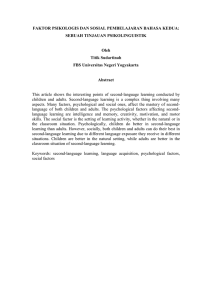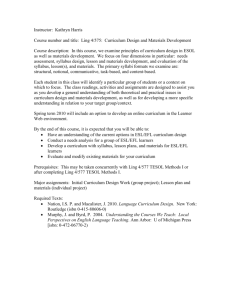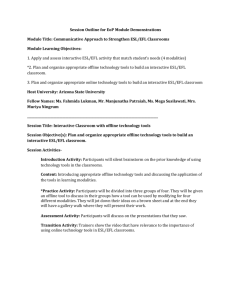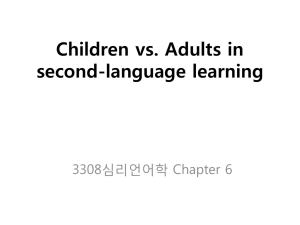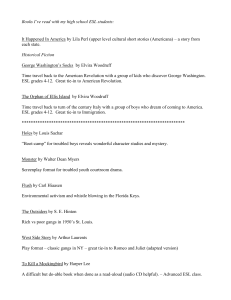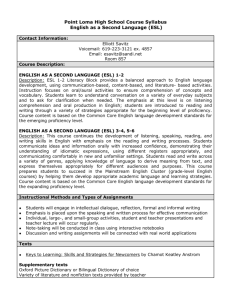Children vs. Adults in Second Language
advertisement
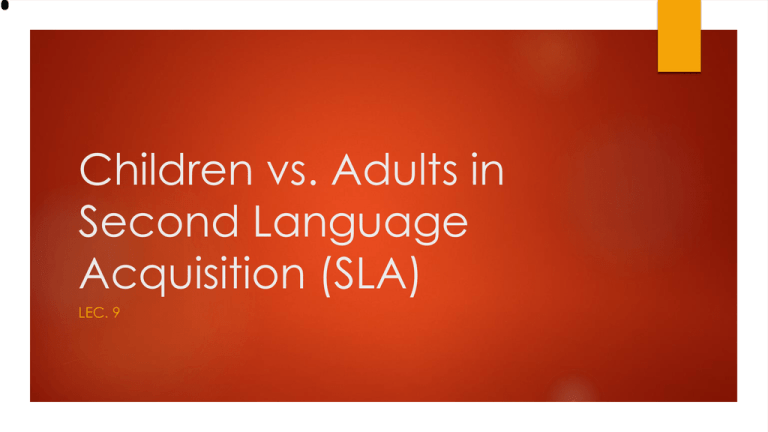
Children vs. Adults in Second Language Acquisition (SLA) LEC. 9 Social situations affecting secondlanguage learning there are many social situations in which a second language is learned, and each of which as its own advantages & disadvantages: 1. the natural situation 2. the classroom situation 3. the community context The natural situation Characteristics of the natural situation It is where the second language is experienced in a situation that is similar to that in which the native language is learned. Language is experienced in conjunction with the objects, situations, and events of everyday life. A child can learn a second language faster than a first language! The natural situation With age, language is more essential for social interaction Adults second-language learners will typically have significantly fewer good language-learning opportunities in a new language community than will children. The natural situation Older children can have problems Sometimes older children may not want to identify with a new community and will consequently resist learning the new language. The natural situation Conclusion The opportunities to experience language in a natural situation decline with age. See the table (lec. 8) The classroom situation The classroom is isolated from other social life The classroom for second-language learning is a planned situation (classroom, teacher, students) The classroom situation Learning language as part of a group and not as an individual There are other characteristics of the planned classroom situation that distinguish it from the natural situation; these include social adjustment to group process, the need to attend class in order to learn, the need for long periods of concentration, and, when required, having to do home study. The classroom situation Conclusion Generally, the ability to learn in a classroom setting improves with age because older children and adults can adapt better to the classroom regimen and more receptive to materials taught through explication. Who is better? Children or adults? 1. In a natural situation Summery of 3 important psychological factors: in a natural situation Psychological factors Social factors Situations Intellectual Inductive explicative Memory Motor skills natural classroom Children under 7 High Low High High High Low 7 - 12 High Medium Med/ High Adults over 12 High High Medium Med/ High Medium Low Low Medium High Who is better? Children or adults? Conclusion In the natural situation of second-language learning, young children will do better than adults, with older children doing better than adults too. Who is better? Children or adults? 2. In the classroom situation (see the table) Who is better? Children or adults? Conclusion In the classroom situation, older children will do better , older children will do the best. Adults will do better than young children to the extent that young children’s classroom is not a simulation of the natural situation. ESL or EFL community context Language community context: English as a second language (ESL) or English as a foreign language (EFL) The ESL context provides more language learning opportunities for the second language learner through exposure to natural situations outside the classroom. The ESL context will benefit children more than it will adults. Is there a critical age for secondlanguage learning? Adults can learn a second language No demonstrated critical age for learning syntax Critical age for pronunciation

